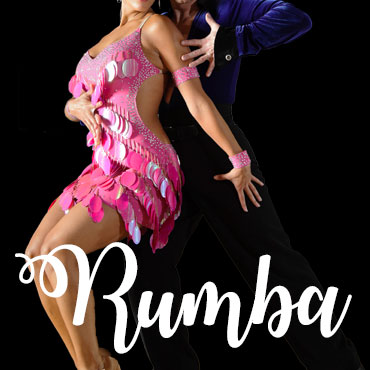The History Behind the Rumba
The rumba was at the beginning of the Cuban and Latin American dance crazes. Danced to music inspired by African rhymes and Spanish melodies, the Americanized Rumba was the basis for the Mambo and the Cha-Cha in the U.S. Rumba rhythms have found their way into country-western, blues, rock ‘n roll another popular forms of music.
Rumba Music
Rumba music is usually written in 4/4 time and may be played over wide variety of tempos. Often in Rumba music there may be an underlying pulsation of and 1 & 2 & 3 & 4. The basic step in Rumba is counted slow, quick, quick (SQQ).
Characteristics of Rumba
The distinctive hip movement called the Cuban Motion, is one of the most important elements of this dance. Introduced in the Rumba, it is an important styling element in a number of popular Latin American dances.
Teaching Elements & Basics of Rumba
- Rumba breaks – Smooth controlled rocks in all directions
- Rumba Turns – Develop momentum control, weight off heels
- Footwork – Teach smooth staccato interpretation
- Control – Concentrate on acute and accurate sense of timing
- Arm styling – Accent complete freedom in all rhythmic expression
- Latin posture – Brace towards partner for better presentation
- Compare/Contrast – Waltz, Cha-Cha, Mambo
What Are You Waiting For?
Start Dancing Today!
Rumba songs and artists include:
- And I love her – the Beatles
- It’s Now or Never – Elvis Pressley
- Besame Mucho – Xavier Cugat
- Neon Moon – Brooks and Dunn
- Under the Boardwalk – The Drifters


